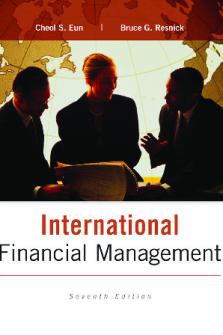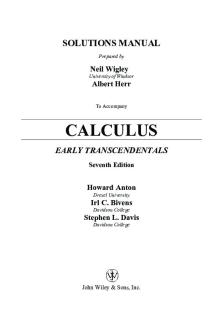GCSM - AA4899 - Seventh Assignment PDF

| Title | GCSM - AA4899 - Seventh Assignment |
|---|---|
| Author | Alessandro Ambrosetti |
| Course | Supply Chain Management |
| Institution | Politecnico di Milano |
| Pages | 3 |
| File Size | 174.1 KB |
| File Type | |
| Total Downloads | 34 |
| Total Views | 129 |
Summary
appunti...
Description
Alessandro Ambrosetti
AA4899
JAMK – University of Applied Sciences
GLOBAL SUPPLY CHAIN – SEVENTH ASSIGNMENT
PROCUREMENT IKEA PROCUREMENT In order to explain how the procurement of IKEA works, it is useful to portray its supply chain and the production cycle of a generic product sold by the company. To go through this process, as an example, we can consider as a final product a table for the living room. IKEA is a home furniture retailer, this means that doesn’t produce anything itself, therefore it requires the support of the entire supply chain from the raw materials to the final product, relying on terms of shipping of the “Delivered” kind. Now, considering our table, the process starts from the raw material suppliers that delivers the materials required to the producers, that in turn, deliver the product to IKEA where the customers can buy it and assemble on their own. Considering the procurement point of view the process relies mostly on e-procurement, thanks to communicating information systems. Everything starts with IKEA identifying the need of the table and so generating a request to suppliers. The company send the request to producers, triggering the production. The suppliers, in turn, generate invoices when goods are ready and ship them to the company, then after the order is checked the payment takes place. The same procedure is repeated between producers and raw materials suppliers.
Figure 1: IKEA's supply chain
MAKE OR BUY
From the map is clear that IKEA mostly apply the “Buy” option, indeed except for the step of product designing the company works just as a retailer. The strategic choice of “Buy” rather than “Make” is justified by financial, operational and strategic factors. Considering the financial factors, the target is to reach a cost advantage and one of the most important factor is the global presence of IKEA, indeed the company states: “By using an end-to-end perspective, we can ensure better products faster at a low price. One example is locating the material supply close to the production, and/or locating production closer to sales markets.” This means that in order to reduce costs, such as transportation costs, it is convenient not to have a centralized production centre or only one supplier. Therefore the company evaluated that instead of having many production centres and many sources of raw materials is better to buy the finished product from suppliers close to the markets. This choice is also justified by the volumes of IKEA. Even if being close to the markets involves many suppliers, the mass production guarantees to suppliers to reach economies of scale and, as a consequence, another cost reduction for the company. Moreover the mass production justify the choice of “Buy” also because of operational factors, thanks to very elevate performance and flexibility obtained by collaborating with suppliers. Indeed the company states: “In IKEA purchasing, we want to exploit our competitive advantage of economies of scale. Volume is our best friend. Our large volume approach enables us to invest in efficient industrial production set-ups and focus on affordability, accessibility, sustainability and quality.” Finally, moving to the strategic factors, the “Buy” decision is supported by the kind of relationship that IKEA builds with its suppliers. The company use a sort of “single sourcing” approach even if it has many suppliers. According to what the company says: “Our supplier relations are based on a shared business model and values – we call this a strategic fit - with a long -term view. All supplier partnerships are characterised by mutual respect, trust and transparency.”
Figure 2: General data about IKEA
It is clear that the target of the company is to build trustful relationship and partnerships with suppliers in order to reduce the risk of relying on an exclusively “Buy” decisions. Moreover this kind of relationship allows the company to strictly cooperate with suppliers and monitor constantly their performance, find convenient agreements on prices, share with the suppliers the focus on improving the performance, ease the communication, ease the orders procedures and also allows a faster development of new products. However the choice of relying on “Buy” solutions, that brings so many benefits, puts IKEA in a dangerous position. The strategy brings the company to generate great part of the cost competitive advantage from its suppliers, creating a strong dependence from the upstream activities. Therefore for IKEA a misbehave, failure or each kind of issues with suppliers can be reason for a loss of money and in the worst case a loss of competitive advantage.
POSSIBLE IMPROVEMENTS IKEA is one of the biggest furniture retailers in the world and the reason why it is so successful is the implementation of efficient and effective strategy that worked properly according to the context, guaranteeing the success to the company. However I think that some areas can be analysed for finding possibilities for improving the competitive advantage of the company. More in the detail I believe that IKEA can reason on the “Types of purchase” in order to improve its efficiency. Indeed, as reported previously, the company always look for strong and long-term relationships with its suppliers. This is the best way to behave for strategic materials and a good approach for bottleneck materials, but if we think about other kind of materials it can be appropriate to have a different kind of relationship with suppliers. Considering non-critical materials it can be better to avoid the investment in long-term relationships, promoting basic and simple procedures for purchasing, plus techniques to find materials at lowest price possible (e.g. bidding).
Sources : https://www.ikea.com/ms/en_JP/pdf/reports-downloads/IKEA_BEHIND_Purchasing.pdf https://www.ikea.com/gb/en/this-is-ikea/about-us/...
Similar Free PDFs

GSCM - AA4899 - Tenth Assignment
- 4 Pages

Labor Economics Seventh Edition
- 594 Pages

Database Systems SEVENTH EDITION
- 1,273 Pages
Popular Institutions
- Tinajero National High School - Annex
- Politeknik Caltex Riau
- Yokohama City University
- SGT University
- University of Al-Qadisiyah
- Divine Word College of Vigan
- Techniek College Rotterdam
- Universidade de Santiago
- Universiti Teknologi MARA Cawangan Johor Kampus Pasir Gudang
- Poltekkes Kemenkes Yogyakarta
- Baguio City National High School
- Colegio san marcos
- preparatoria uno
- Centro de Bachillerato Tecnológico Industrial y de Servicios No. 107
- Dalian Maritime University
- Quang Trung Secondary School
- Colegio Tecnológico en Informática
- Corporación Regional de Educación Superior
- Grupo CEDVA
- Dar Al Uloom University
- Centro de Estudios Preuniversitarios de la Universidad Nacional de Ingeniería
- 上智大学
- Aakash International School, Nuna Majara
- San Felipe Neri Catholic School
- Kang Chiao International School - New Taipei City
- Misamis Occidental National High School
- Institución Educativa Escuela Normal Juan Ladrilleros
- Kolehiyo ng Pantukan
- Batanes State College
- Instituto Continental
- Sekolah Menengah Kejuruan Kesehatan Kaltara (Tarakan)
- Colegio de La Inmaculada Concepcion - Cebu












